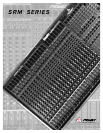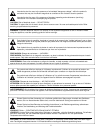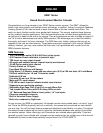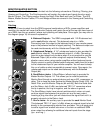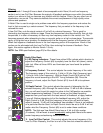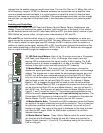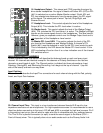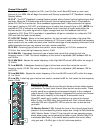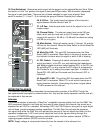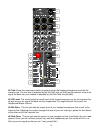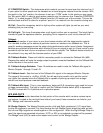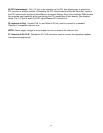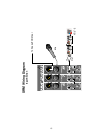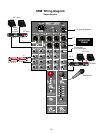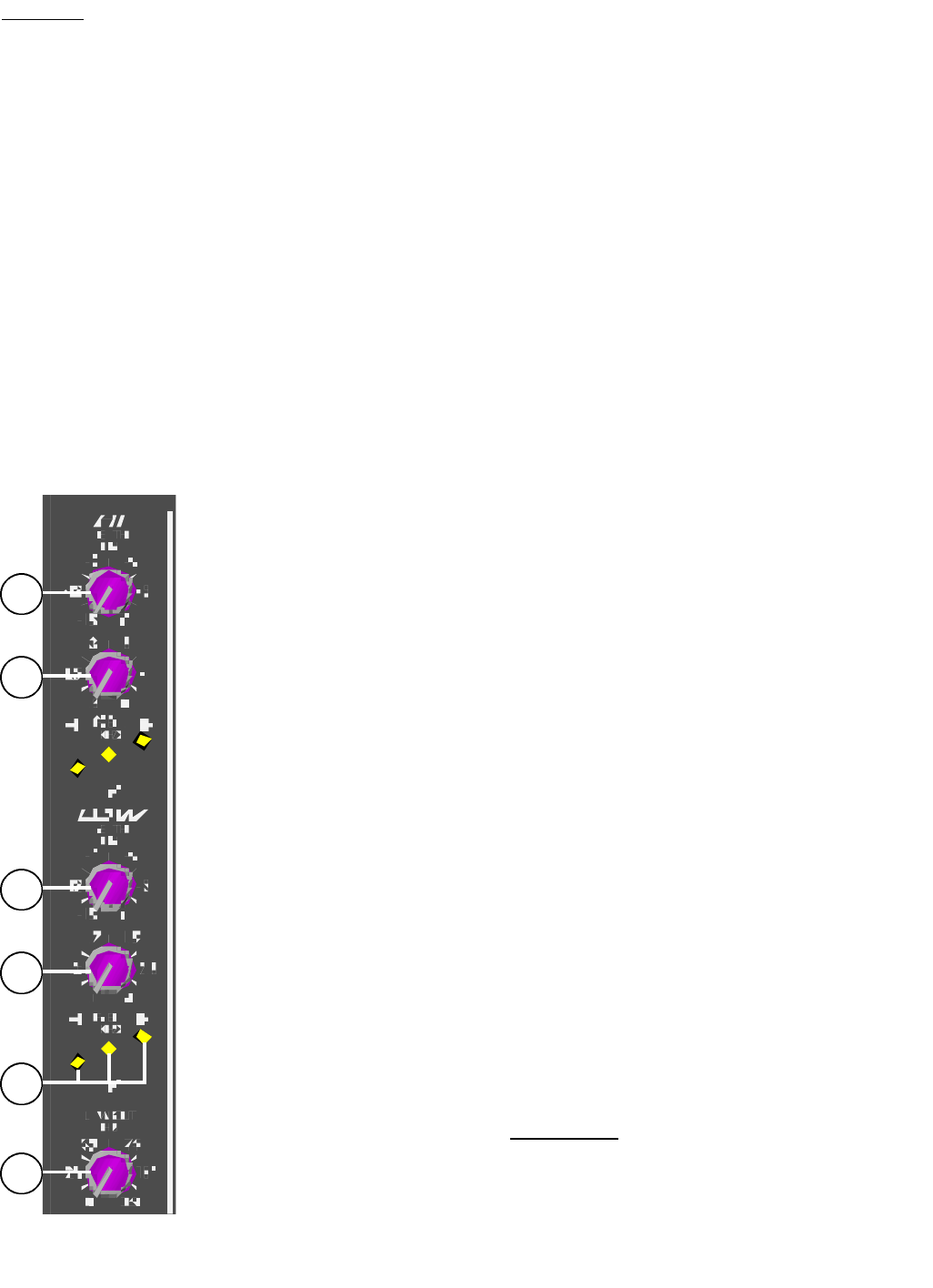
Filtering
Monitor Sends 1 through 8 have a bank of two sweepable notch filters (Hi and Low frequency
section) and a Low Cut Filter. Because the majority of feedback problems occur within the monitor
system, our advice is that you become very familiar with this feature. Filters, like any other form of
equalization, are an aid. They cannot substitute the correct use/placement of high-quality micro-
phones and speakers.
A Notch Filter is used to single out a problem area within the frequency spectrum and reduce the
level in that one area by a certain amount. The frequency that you select is the frequency to be
reduced the most.
A Low Cut Filter, cuts the signal content off (roll-off) at a desired frequency. This is great for
eliminating low frequency rumble on stage. Since low frequencies have less directivity than do high
frequencies, it is often unnecessary to have very low frequency content in the monitor mix. This
becomes apparent when attempting to play an acoustic guitar on a high-volume stage. The acoustic
cavity of the guitar has a tendency to resonate with the low frequency content of the monitor mix.
When that happens a feedback occurs in the low frequency portion of the spectrum. Much of that
portion can be eliminated with the Low Cut Filter, thus reducing the chance of feedback. Once
again, this section applies to Monitor Sends 1-8 only.
NOTE: See SRM specifications (page 20) for filter details.
Notch Filter Bank:
8. LED Tuning Indicators: These three yellow LEDs indicate which direction to
adjust the Frequency Control (#9) to properly tune the filter: left (down), center,
right (up). When all three LED’s are illuminated you have found the problem
frequency.
9. Frequency Control: This control adjusts the center frequency of the notch
The frequency range of this control is .5 kHz to 10 kHz (High Frequency) and
.1 kHz to 4 kHz (Low Frequency.). With the Depth Control (#10) set to 0 dB,
adjust this control according to the LED Tuning Indicators (#8). Once the
frequency is found, adjust the Depth Control (#10) from 0 dB to its optimum
position.
10. Depth Control: This control adjusts the amount of attenuation for the
selected frequency (#9). Although the control offers -15 dB to 0 dB of attenua-
tion, you will want to set this control as close to the 0 dB position as possible
without experiencing feedback. This will insure you the flatest frequency
response from your board with the least amount of feedback, a happy medium
if you will. Before attempting to find the feedback frequency (#9), adjust the
Depth Control to 0 dB. Once the frequency is found you will want to slowly
adjust it towards -15 dB until the feedback has subsided. If there is no feedback
on a particular Monitor Send, its Depth Control should be set to 0 dB. It will not
matter what the Frequency Control (#9) is set to under these conditions.
NOTE: The High and Low Notch Filters have a .5 Hz to 4 kHz overlap
(3 octaves). You will want to avoid accidentally setting both filters to the same
center frequency and achieving double attenuation.
11. Low Cut Filter Control: This control adjusts the corner frequency of the
Low Cut Filter. Basically, the filter is on all of the time but unless this control is
6
10
9
10
9
8
11



